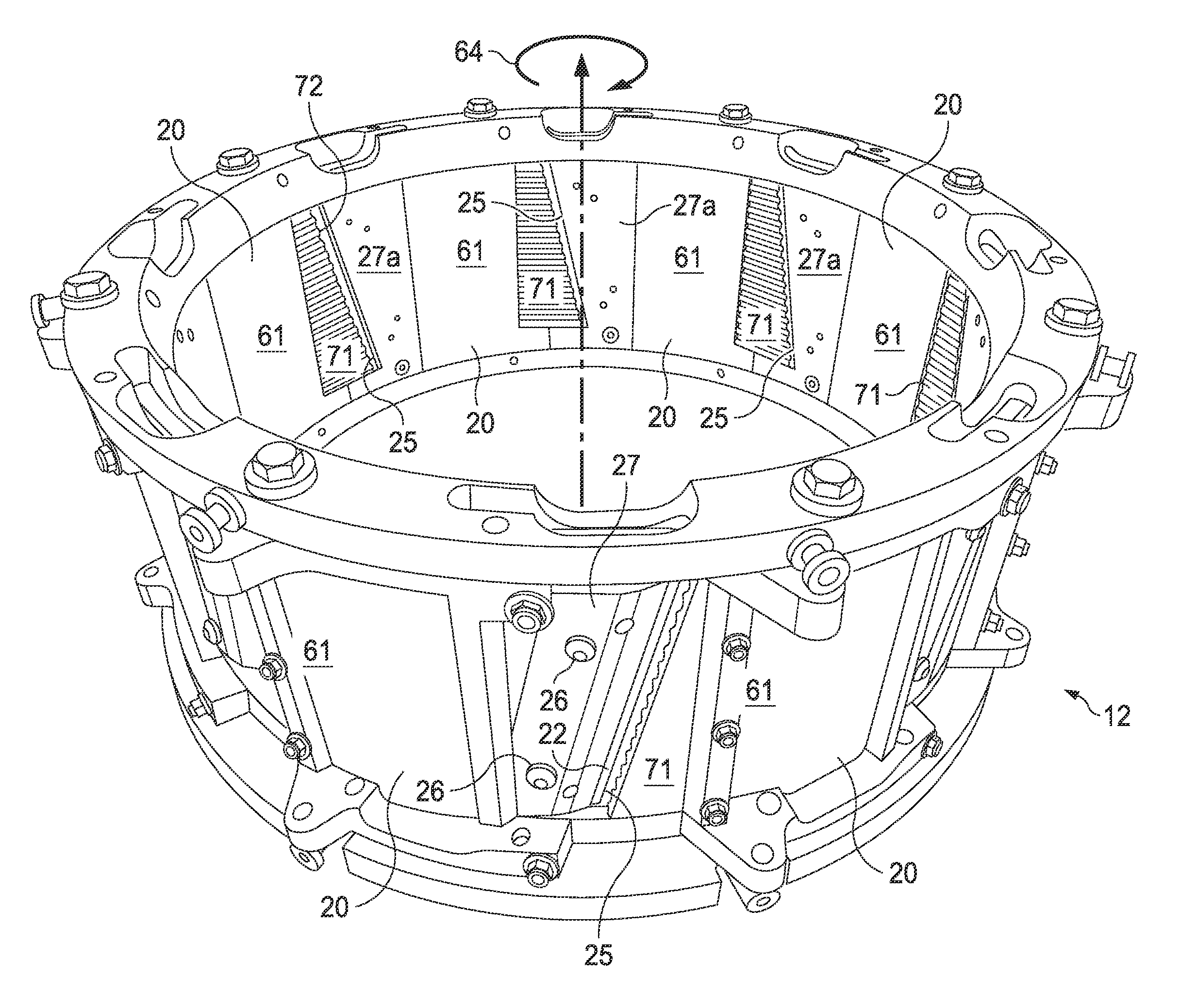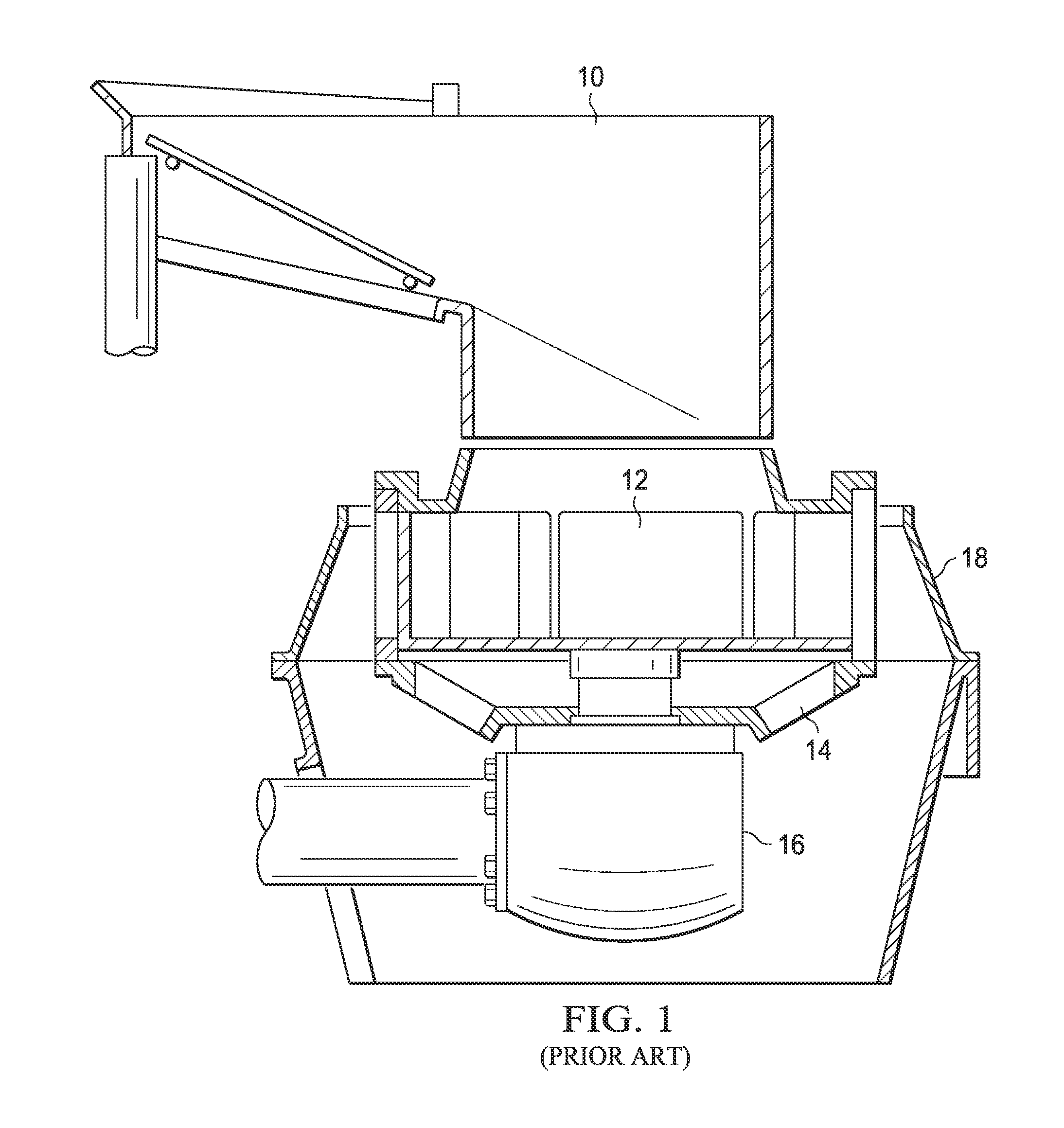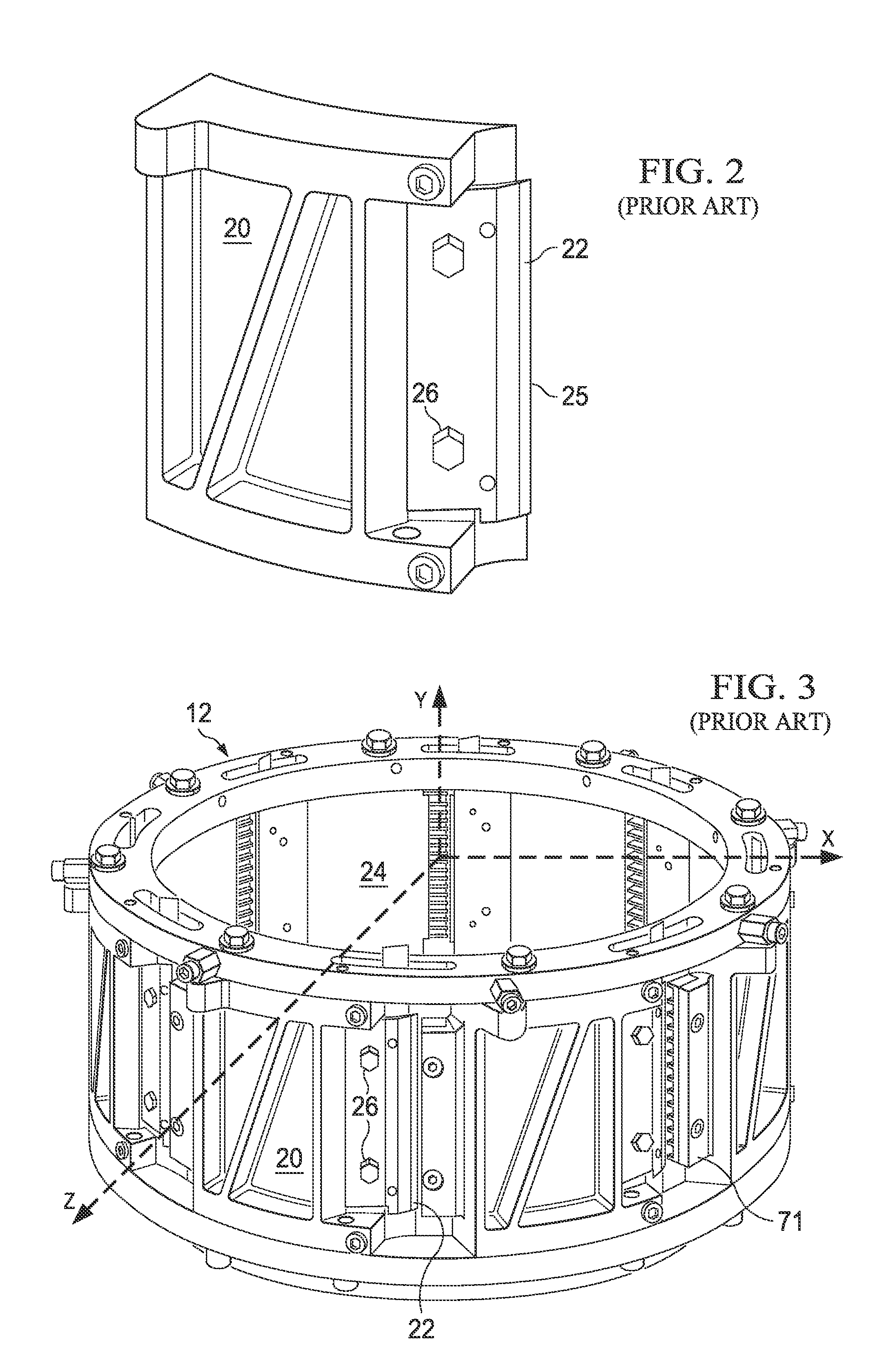Cutting Head Assembly For Slicing Food
a cutting head and food technology, applied in the direction of saw chains, metal working apparatus, manufacturing tools, etc., can solve the problems of potato starch loss, damaged cells releasing starch granules, and potato cell rupture and disturbance, so as to increase the slicing rate and maintain the slicing rate. , the effect of increasing the yield
- Summary
- Abstract
- Description
- Claims
- Application Information
AI Technical Summary
Benefits of technology
Problems solved by technology
Method used
Image
Examples
embodiment 11
12. An additional embodiment, according to additional embodiment 11, wherein the reduction in yield loss is at least 1.2%.
13. An additional embodiment, according to additional embodiment 11, wherein the reduction in yield loss is 0.18% to 1.2%.
14. An additional embodiment, according to any of the additional embodiments 1-4, wherein the food product is produce.
15. An additional embodiment, according to any of the additional embodiments 1-4, wherein the food product is selected from the group consisting of potatoes, apples, pears, beets, yucca, sweet potatoes, tomatoes, mangos, eggplants, cucumbers, zucchinis, or some combination thereof.
16. An additional embodiment, according to any of the additional embodiments 1-4, wherein, when the cutting edge slices food product, a total force of the food product against the cutting edge has a component parallel to the cutting edge to provide a cleaning force.
17. An additional embodiment, according to any of the additional embodiments 1-4, where...
embodiment 17
18. An additional embodiment, according to additional embodiment 17, wherein said another component of the cutting head is a support.
19. An additional embodiment, according to additional embodiment 17, wherein said another component of the cutting head is a sand gate.
20. An additional embodiment, according to additional embodiment 17, wherein a width of the gap is constant along a length of the gap.
21. An additional embodiment, according to additional embodiment 17, wherein the length of the gap is an entire length of the cutting edge.
22. An additional embodiment, according to any of the additional embodiments 1-4, wherein the portion of the cutting edge is the entire length of the cutting edge.
23. An additional embodiment, according to any of the additional embodiments 1-4, wherein the portion of the cutting edge is less than an entire length of the cutting edge.
embodiment 23
24. An additional embodiment, according to additional embodiment 23, wherein the portion of the cutting edge is greater than 50% of the length of the cutting edge.
25. An additional embodiment, according to additional embodiment 23, wherein the portion of the cutting edge is greater than 66% of the length of the cutting edge.
26. An additional embodiment, according to additional embodiment 23, wherein the portion of the cutting edge is greater than 75% of the length of the cutting edge.
27. An additional embodiment, according to additional embodiment 23, wherein the portion of the cutting edge is greater than 90% of the length of the cutting edge.
28. An additional embodiment, according to additional embodiment 23, wherein the portion of the cutting edge is greater than 95% of the length of the cutting edge.
29. An additional embodiment, according to additional embodiment 23, wherein the portion of the cutting edge is greater than 99% of the length of the cutting edge.
30. An additional e...
PUM
 Login to View More
Login to View More Abstract
Description
Claims
Application Information
 Login to View More
Login to View More - R&D
- Intellectual Property
- Life Sciences
- Materials
- Tech Scout
- Unparalleled Data Quality
- Higher Quality Content
- 60% Fewer Hallucinations
Browse by: Latest US Patents, China's latest patents, Technical Efficacy Thesaurus, Application Domain, Technology Topic, Popular Technical Reports.
© 2025 PatSnap. All rights reserved.Legal|Privacy policy|Modern Slavery Act Transparency Statement|Sitemap|About US| Contact US: help@patsnap.com



